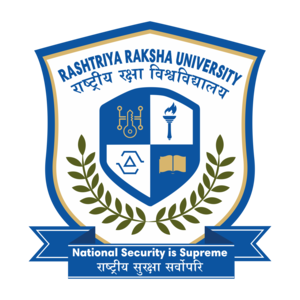
Indigenous Peoples’ Rights
Indigenous Peoples’ Rights
- Charul Lunia
The first inhibiters of traditional land, the holders of diverse language and living, the practitioners of unique cultural identities and religious activities. Indigenous people are distinct from the prevalent society and have their own social, cultural, economic, political standing and characteristics. They are considered the people who were first occupiers of land, geographical area or a country i.e. before colonization, conquest, migration etc and hence are living since. Scheduled Tribes or commonly known as “Adivasis” are the Indigenous people who constitute 8.2% of the Indian population. In India 705 ethnic groups are considered a part of Scheduled Tribes but as we all know about the immense cultural diversity of India, there are many more groups which are not officially recognized but must be a part and should be safeguarded of their rights. Today ironically people who have been living in a country for the longest of time as far as human memory goes have to fight for their identities, their land, their livelihood etc. They are the most under privileged, disadvantageous people who have to seek for everything they have been doing and are a part since their birth. Indigenous people live in the close vicinity of the environment, they shelter in a forest, they get their food from the forest, they worship the forest, and they have learned to live in the most hostile environmental conditions their lives revolves around conserving bio diversity. It is well known that with economic growth the environment always suffer the same way when an Industry is set up in the lands of flourishing flora and fauna the tribes suffer. Loss of forest for mining, infrastructure, cropping etc. makes them struggle for survival. The Indigenous people are deprived of their home every time the government gives away a Multi National Corporations the work to develop infrastructure. Forest is everything for Tribal people and with climate changes gripping us and species in wild affecting from it there is a growing need of strong policies and strong enforcement. As indigenous people live devoid of the greedy and globalized world they often are neglected and unenforced of basic human rights, with new policies in working “which are for betterment of society” forgets these people and further push them in isolation, uneducated, deepening in poverty and unknown to basic rights they have.
Indian Stand Point
With the statement “all Indian People are Indigenous” the government chose to not recognize the concept of Indigenous people but in 2007 voted in favor of the UN Declaration on The Rights of Indigenous People (UNDRIP) and signed the ILO convention 107. As per Part IV of the Indian Constitution which, the State is obligatory to put into force the International Treaties Indian Government has signed, the Directive Principle of State Policy also includes taking special care in promoting the educational and economic interest of weaker section specially the Scheduled Tribes and Scheduled Castes. The Indian Constitution also provides for special Land rights and self governance applicable in high density Indigenous people area. The Part III which enshrines the soul of Constitution i.e. The Fundamental Rights provided for the Right to Equality and equal protection before law with no discrimination on the basis of caste, sex, religion, race, place of birth etc. it also provides for making special provisions for the advancement of any socially or educationally backward class which includes Scheduled Tribes and to abolish Untouchability. India has signed various International treaties on various subject matter which have rights of Indigenous people at stake, still every time a law is made or a committee is set up the end result and its implementation is like a blue moon, which can be seen rarely. Some examples to put in perspective are the scheduled castes and scheduled tribes (prevention of atrocities) act, 1989 now amended lacks to safeguard the people and still the crime against SC, STs are on the rise year by year. India has been drafting the National Forest Policy since 2018 when the Indigenous People protests were on the rise but there is no government backing and again the Tribal are neglected, as for now the 1988 version of the policy is in place which is very basic and talks about conversion not strict actions. A positive step which was taken by one of the seven north east states who are densely populated with Indigenous people was approving the “Assam Land Policy- 2019” under which addressed various issues confronted by the Tribes and was based upon a committee which was set up to do so also under the policy there was no concrete definition written for Indigenous People but were said to be identified , but again the National Registrar of Citizen (NRC) supposedly not include 100,000 tribals who were the original inhabitants of Assam. Under the Forest Rights Act no member belonging to the tribes who are considered to be forest dwellers are to be evicted from land until all the necessary procedure and verification is complete but again this is in pen and paper and Tribes even after getting rights or have application pending are always under threat as to when they will be thieved of their land as big organizations come in and get necessary permit to start working which they have no authority to stop.
Rights Available
Article 23 prohibits the system of bonded labor.
Article 24 prohibits employment of children below the age of 14 years in factories and hazardous places.
Article 29 provides for communities the right to safeguard their distinct language, script and culture, even if it’s a minority community.
Article 46 provides for promotion of weaker section of society by promoting educational economic interest, especially uplifting Scheduled Tribes and Scheduled Castes.
Article 164(1) gives states the authority to establish special ministry for scheduled tribes and scheduled castes.
Article 243, 330 and 334 tells us the guidelines for reservation of seats for Schedule Tribes and Schedule Caste in House of People and Panchayats.
Article 244 deals with administration of Tribal Areas.
Article 244-A empowers the parliament to form an autonomous state comprising of tribal areas in Assam, also gives the authority to create local legislature or council of ministers. But the administration would be according to sixth schedule and autonomy in making of districts and regions.
Article 275 empowers the parliament to make grants and provide it to state for the welfare and upliftment of Scheduled Tribes and to better the administration of Scheduled Castes.
The Fifth and Sixth schedule gives the provision relating to administration and control of the scheduled and tribal area in all states except Assam, Tripura and Mizoram which are contained in Fifth schedule.
Various Acts in Place
The Untouchability (Offences) Act, 1995 prescribes for the punishment of practice of untochability and any disability arising thereof.
The Scheduled Tribes and Scheduled Castes (Prevention of Atrocities) Act, 1985 protects the tribal people from various discrimination faced from influential of the society and to also eradicate thee inhumane torture to Indigenous people.
The Scheduled Tribes Bonded Labor Abolition Act, 1976 to protect tribal people from exploitation by the boss as they provide minimum to no wage to the schedule tribes for all the hard work they do.
The Forest Conservation Act, 1980 provides that the use of forest land for industrial purpose is prohibitory if tribal are already inhibited and have the authority on the land as forest is home to Indigenous people.
There are many rights granted and many acts enacted by union as well as state, there are many treaties signed but the implementation and policy making lacks when it comes to the action on the governments part. The position of Indigenous people is paradoxical to the many treaties we have signed and still they remain the most under privileged community of this country. The climate change is on the rise and Indigenous people are the first to get affected if we don’t act now our Tribes who portray the cultural diversity who is more than 8% of our population will be the first to lose their homes and livelihood. The rights are in black and white but not in action.
References
[1] ‘Indigenous World 2020: India’ < https://www.iwgia.org/en/india/3601-iw-2020-india.html> accessed 30 May, 2020
[2] ‘Indigenous People, Indigenous Voices’
< https://www.un.org/esa/socdev/unpfii/documents/5session_factsheet1.pdf> accessed 30 May, 2020
[3]‘The Rights of Indigenous Peoples’ <http://hrlibrary.umn.edu/edumat/studyguides/indigenous.html> accessed 30 May, 2020
[4] ‘Observations on the State of Indigenous Human Rights in India’<https://www.culturalsurvival.org/sites/default/files/INDIAUPR2016final.pdf> accessed 30 May, 2020
[5] ‘Indigenous people in India and the web of indifference’ <https://www.downtoearth.org.in/coverage/governance/indigenous-people-in-india-and-the-web of-indifference-55223> accessed 30 May, 2020
[6] ‘Indigenous People at United Nations’ <https://www.un.org/development/desa/indigenouspeoples/about-us.html> accessed 30 May, 2020
[7] ‘India’s support for UN Declaration on the Rights of Indigenous Peoples’ <https://indiantribalheritage.org/?page_id=259>accessed 30 May, 2020
[8] ‘The Role of ethnic and Indigenous people of India and their culture in the conservation of biodiversity’ <http://www.fao.org/3/xii/0186-a1.htm > accessed 30 May, 2020
[9] ‘Rights of Indigenous People’ <https://www.slideshare.net/nsrkbharat/rights-of-indigenous-people> accessed 30 May. 2020
[10] ‘Indigenous Peoples in India’<https://www.iwgia.org/en/india.htm> accessed 30 May, 2020












